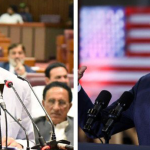Bengaluru, India: Leaning forward, arms resting on his office, Russian President Vladimir Putin delivered a crisp communication to leaders of the country’s energy sector before this month they demanded to plan for a decline in Western significance by shifting their focus from Europe to Asia.
From the Kremlin’s perspective, that directive makes sense. The United States, United Kingdom, and Australia have formally banned the import of Russian energy. And the European Union is under mounting pressure from the US and members like Poland and Lithuania to launch a proscription on Russian canvas and gas in response to Moscow’s continuing war in Ukraine.
But a blend of structure limitations, political pressure, and poor profitable demand could help Asian requests from absorbing energy inventories that would else be headed to Europe if Brussels indeed bans all Russian hydrocarbons, according to judges. Developed European nations regard nearly two-thirds of Russia’s gas exports and half of its canvas deals.
Utmost Russian channels are geographically erected to feed European requests and can not supply Asia. Two of Russia’s biggest Asian guests — Japan and South Korea — are Western abettors who’ll probably face violent pressure from the US to avoid any increase in energy significance. China, the largest importer of Russian canvas, is witnessing profitable retardation because of COVID-19 lockdowns that will only reduce its hunger for energy.
Still, I don’t see how Asian requests will be suitable to make up for that demand,” Hari Seshasayee, “ If the EU does go ahead with a complete ban. “ Russia might need to reduce its canvas product by 30 percent by the end of 2022.”
For the moment, the EU doesn’t have a “ unified position” on any proscription against Russian energy, German review Die Welt reported on Monday, quoting the bloc’s top diplomat, Josep Borell. Germany and Hungary are among the nations bothered about a steep rise in energy costs if they stop buying Russian canvas and gas.
Meanwhile, the EU is trying to concoct a payment medium that will allow countries to both cleave to fiscal sector warrants against Moscow and to the Kremlin’s directive that European nations buy their energy in roubles.

But in the canvas request, judges suppose it’s “ a matter of time before Europe vetoes Russian crude and products,” Lydia Powell, an elderly fellow at the New Delhi-headquartered Observer Research Foundation, told Al Jazeera. That could cut four million barrels per day from the global crude request, Powell said.
Aware of these pitfalls, Moscow has been trying to reduce its dependence on Western buyers for some time now. In 2012, Putin inaugurated the Eastern Siberia-Pacific Ocean canvas channel, aimed at delivering crude to China and Japan. The Power of Siberia channel, launched in 2019, can supply up to 38 billion boxy meters of Russian gas to China. In February, during Putin’s visit to Beijing weeks before the launch of the war, China and Russia blazoned plans for yet another gas channel.
But these systems only emphasize the complications involved in starting — or adding — canvas and gas trade between nations, judges said.
“ Transportation structure plays an important part, and it isn’t developed to the same extent with Asian requests as it’s with Europe,” Filip Medunic, a warrants expert at the European Council on Foreign Relations, told Al Jazeera.
Those limitations aren’t stopping Moscow from offering canvas at subsidized prices, and India, the world’s third-largest canvas dieter, appears to be smelling It increased its Russian canvas significance in March. Russian and Indian officers also met last week to try to overcome an impasse over the shipping of coking coal to Indian steelmakers, which has declined since March overpayment and logistics complications, Reuters reported on Monday, citing a trade source and Indian government source.
Still, pollutants will surely find it seductive,” Powell said of Russian canvas exports, “ If Russia offers abatements and favorable credit terms.

Even so, crude from Russia constituted only 1.4 percent of India’s oil imports in 2020, meaning that a spike will not help Putin much. Moreover, different countries produce crude of different densities, and it will not be easy for India’s older public sector refineries to switch from the Middle Eastern, American and Latin American oil they currently work with, Powell said. Some private refineries might also be hesitant to alienate Western customers by using Russian crude, she added.
At a time when India is strengthening ties with the US and the EU, an increase in energy purchases from Russia could damage those relationships, Niklas Swanström, director of the Stockholm-based Institute for Security and Development Policy, told Al Jazeera.
South Korea and Japan, among Russia’s top 10 oil purchasers, would face even harsher censure from the US — their principal security provider — if they were to try and soak up more crude, experts said.
SOURCE: AL JAZEERA






